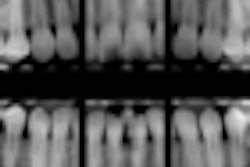Taking general anesthesia dental procedures out of a hospital setting and into the dental office can greatly reduce costs, according to a new study in Anesthesia Progress (December 2012, Vol. 59: 4, pp. 147-153).
In some cases, general anesthesia is the best option for pediatric dental patients undergoing treatment. However, the cost of such services is prohibitively expensive and often inadequately reimbursed, noted the study authors, from Stony Brook Medicine and Stony Brook School of Dental Medicine.
They conducted a time and cost analysis of dental general anesthesia use in office and hospital settings. Data were gathered from records of 96 patients, 36 to 60 months in age, who received general anesthesia for dental care from either an office-like area in a dental school or a university hospital ambulatory setting.
Findings indicated that costs were significantly reduced by administering anesthesia in a dental office. Some of the high costs can be attributed to the use of a hospital operating room and medical anesthesiologists to administer general anesthesia.
The study found an average adjusted cost savings of more than $5,000 for a dental office-based general anesthesia procedure compared with a hospital-based procedure. The average total cost for hospital-based care was $7,303, compared with $414 for dental office care. Medicaid and health insurance programs often reimburse such procedures at a very low rate or deny benefits as being medically unnecessary, the researchers noted.
The average time of anesthesia treatment in the hospital setting was 222 minutes, compared with 175 minutes in the office setting. Recovery time averaged 157 minutes in the hospital and just 25 minutes in the dental office. In the hospital setting, two additional hours of recovery time were required because patients must be sent to a postanesthesia care unit following surgery.
General anesthesia may be the best method of treatment for very young, uncooperative, or precooperative pediatric patients, the study authors noted.



















